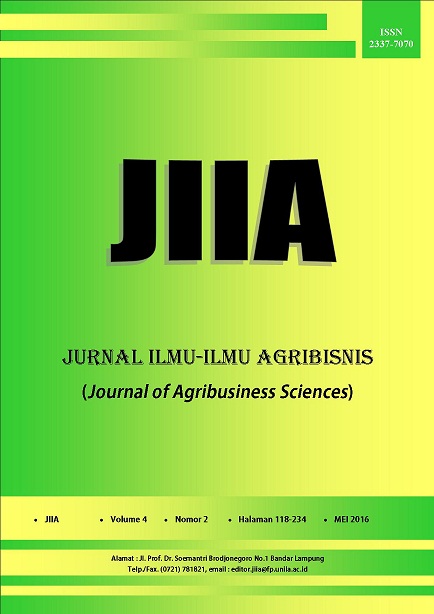STRATEGI PENGEMBANGAN PASAR TRADISIONAL YANG BERORIENTASI PADA KEPUASAN MASYARAKAT DI SURAKARTA
DOI:
https://doi.org/10.23960/jiia.v4i2.1241 Abstract View: 1546
Abstract View: 1546
Abstract
The purpose of this research is to understand critical success factors which is considered by customer in selecting market when they are do purchase and understand kind of strategy that management use to develop they own traditional market. Basic method which used in this research is descriptive analytic. Determining this research location is using purposive method, and for examining the critical success factors which are considered by customer, weight and attractiveness factors are asked to the market management chosen by purposive sampling method. The data collection is done by observation technique, interview, and recording method. Data analysis is conducted by Competitive Profile Matrix (CPM) and Quantitative Strategy Planning Matrix (QSPM) analysis. The critical success factors which are considered by customer are 13: they are price, kind of products are being sold, quantity of products being sold, safety aspect, cleanliness, quality of products are offered, services, market layout, convenience aspects, easiness of transportation access, facilities (parking spot, restroom, information center, etc.), spacious of market, and it’s operating hours. The most critical success factor which has the biggest value is products price, it’s about 0.12. Based on QSPM known that strategy recommendation to be applied by Market Management is to rearrange products grouping that shown by total fascination, it’s about 3.21. In order to do the strategy, the Market Management has to use good communication due to its relation to market stakeholder.
Key words: CPM, QSPM, traditional market, strategy development
Downloads
Downloads
Published
How to Cite
Issue
Section
License
Authors who publish with this journal agree to the following terms:
Authors retain copyright and grant the journal right of first publication with the work simultaneously licensed under a Creative Commons Attribution License that allows others to share the work with an acknowledgement of the work's authorship and initial publication in this journal.
Authors are able to enter into separate, additional contractual arrangements for the non-exclusive distribution of the journal's published version of the work (e.g., post it to an institutional repository or publish it in a book), with an acknowledgement of its initial publication in this journal.
Authors are permitted and encouraged to post their work online (e.g., in institutional repositories or on their website) prior to and during the submission process, as it can lead to productive exchanges, as well as earlier and greater citation of published work (See The Effect of Open Access).














